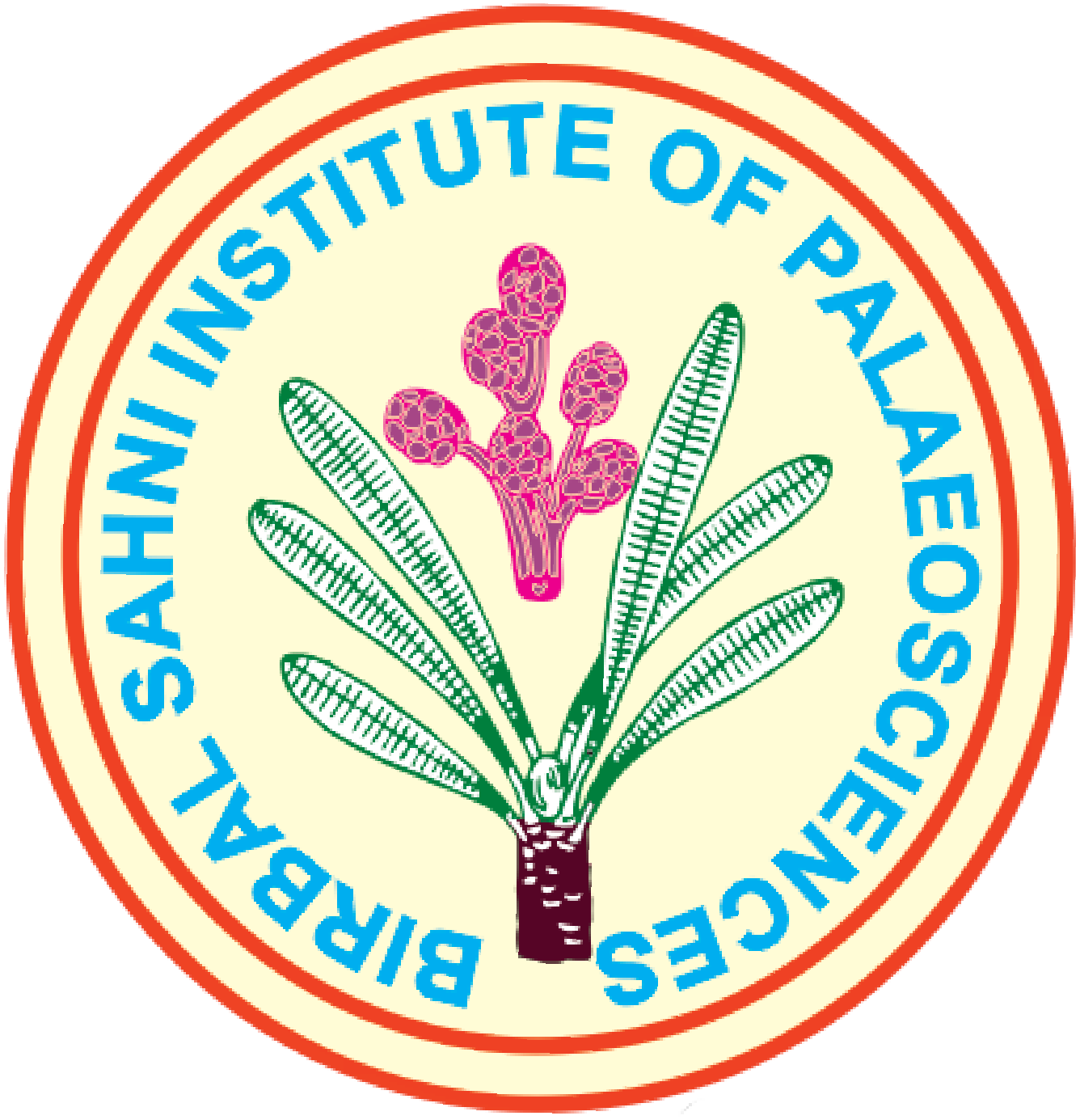Study on modern vegetation distribution in Sevan Tal area, Raebareli District, Uttar Pradesh
DOI:
https://doi.org/10.54991/jop.2019.40Keywords:
Pollen analysis, Surface soils, Pollen/spore rain, Sevan Tal, Uttar PradeshAbstract
Pollen analysis of ten surface sediment samples from Sevan Tal, Raebareli District (U.P.) reveals a good assemblage of arboreals (trees & shrubs) comprising Holoptelea integrifolia, Acacia nilotica, Syzygium cumini, Madhuca indica and Shorea robusta, etc. However, plant diversity in forest groves has been observed in eastern and southern fringes but are less diversified in northern and western flanks due to arable and heathland, respectively in the area. Together with av. 4% shrubs, the trees constitute av. 23.3% arboreal pollen. Even then, in general, the reduced frequencies of the trees could be ascribed to their low pollen productivity since they portray a strong tendency of entomophily. Among the non–arboreals, Poaceae with av. 35% pollen subdues the other herbaceous elements. The substantially increased frequencies of cultural taxa, viz. Cerealia, Chenopodiaceae/ Amaranthaceae (Cheno/Am), Artemisia, Cannabis sativa and Brassicaceae, more particularly on the northern and western flanks, truly reflect the intensive agriculture practice in the region. The consistent presence of marshy taxa such as Cyperaceae coupled with Polygonum plebeium, P. serrulatum and Liliaceae suggests the intermittent wetlands in the proximity of the lake. In all, the representation of the non–arboreals corresponds closely with their factual occurrence in the ground flora, constituting the largest chunk of av. 75% pollen. The frequent record of Potamogeton together with Lemna, Typha, etc. denotes the existence of the lakes around the sampling provenance. This comparative database on pollen vis–à–vis vegetation relationship serves as modern analogue for the appropriate assessment of the pollen sequence from the sediment deposit in terms of past vegetation and climate change in the Central Ganga Plain. Moreover, the representation of the arboreals, particularly trees, in the spectra symbolizes the prevailing climatic condition in the study area.
Downloads
Metrics
References
Anupama K, Ramesh BR & Bonnefille R 2000. Modern pollen rain from the Biligirirangan–Melagiri hills of Southern Eastern Ghats, India. Review of Palaeobotany and Palynology 108: 175–196.
Barboni D & Bonnefille R 2001. Precipitation signal in pollen rain from tropical forests, South India. Review of Palaeobotany and Palynology 114: 239–258.
Basumatary SK & Bera SK 2007. Modern pollen–spore assemblage from sediment of tropical moist deciduous forest, East Garo Hills Meghalaya. Journal of Palynology 43: 111–118.
Bonnefille R, Anupama K, Barboni D, Pascal JP, Prasad S & Sutra JP 1999. Modern pollen spectra from tropical South India and Sri Lanka, altitudinal distribution. Journal of Biogeography 26: 1255–1280.
Chauhan MS, Khandelwal A, Bera SK & Gupta HP 1990. Palynology of Kathauta Tal, Chinhat, Lucknow. Geophytology 21: 191–194.
Chauhan MS 1994. Modern pollen/vegetation relationship in the tropical deciduous sal (Shorea robusta) forests in District Sidhi, Madhya Pradesh. Journal of Palynology 30: 165–175.
Chauhan MS 2008. Pollen deposition pattern in the tropical deciduous sal (Shorea robusta) forests in northeastern Madhya Pradesh. Geophytology 37: 119–125.
Clark DA, Clark DB, Sandoval R & Castro MV 1995. Edaphic and human effects on landscape–scale distributions of tropical rain forest palms. Ecology 76: 2581–2594.
Erdtman G 1943. An Introduction to Pollen Analysis. Chronica Botanica, Waltham, Mass., USA.
Farooqui A & Sekhar B 2011. Climate change and vegetation succession in Lalitpur area, Uttar Pradesh (India) during late Holocene. Tropical Ecology 52 (1): 69–77.
Fraegri K & Iverson J 1975. Oxford: Blackwell Scientific Publications. Textbook of Pollen Analysis, 3rd edn.
Gupta HP & Yadav RR 1992. Interplay between pollen rain and vegetation of Tarai–Bhabar in Kumaon Division, U.P., India. Geophytology 21: 183–189.
Luna SV, Figueroa J, Balthazar M, Gomez R, Townsend LR & Schoper JB 2002. Maize pollen longevity and distance isolation requirements for effective pollen control on the coastal plain of Nayarit, Mexico. Crop Science 41: 1551–1557.
Sharma C 1985. Recent pollen spectra from Garhwal Himalaya. Geophytology 13 (1): 87–97.
Saxena A & Trivedi A 2017. Pollen-based vegetation and climate change records deduced from the lacustrine sediments of Kikar Tal (Lake), Central Ganga Plain, India. Palaeobotanist 66(1): 37–46.
Singh G, Chopra SK & Singh AB 1973. Pollen–rain from the vegetation of northwest India. New Phytology 72: 191–206.
Trivedi A & Chauhan MS 2011. Modern pollen rain–vegetation relationship study in Jalesar, Unnao District, Uttar Pradesh. Journal of Palynology 47: 11–21.
Trivedi A, Chauhan MS & Farooqui A 2014. Studies on pollen rain vis–a–vis vegetation relationship and thecamoebian diversity in Bari Tal area, Lucknow District, Uttar Pradesh. Biological Forum–An International Journal 6 (1): 68–78.
Trivedi A, Saxena A & Chauhan MS 2015. Modern pollen rain deposition pattern in Lashoda Tal, Raebareli District, Uttar Pradesh, India. The Palaeobotanist 64: 105–112.
Trivedi A, Saxena A & Chauhan MS 2016. Studies on pollen rain vis–a–vis vegetation relationship in Chaudhari–Ka–Tal, Raebareli District, Uttar Pradesh. Journal of the Palaeontological Society of India 61(1): 85–90.
Downloads
Published
How to Cite
Issue
Section
License

This work is licensed under a Creative Commons Attribution-NonCommercial 4.0 International License.









